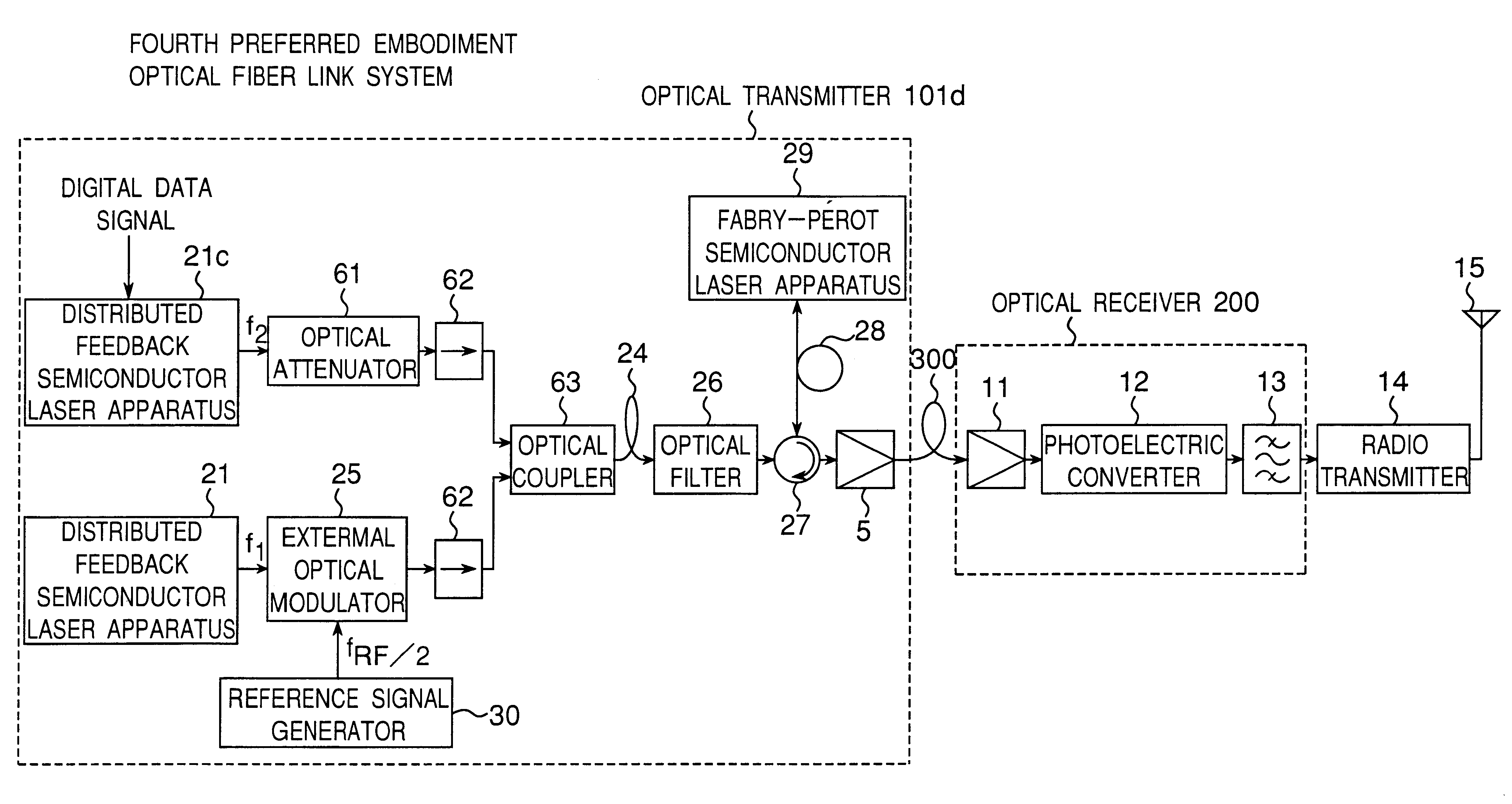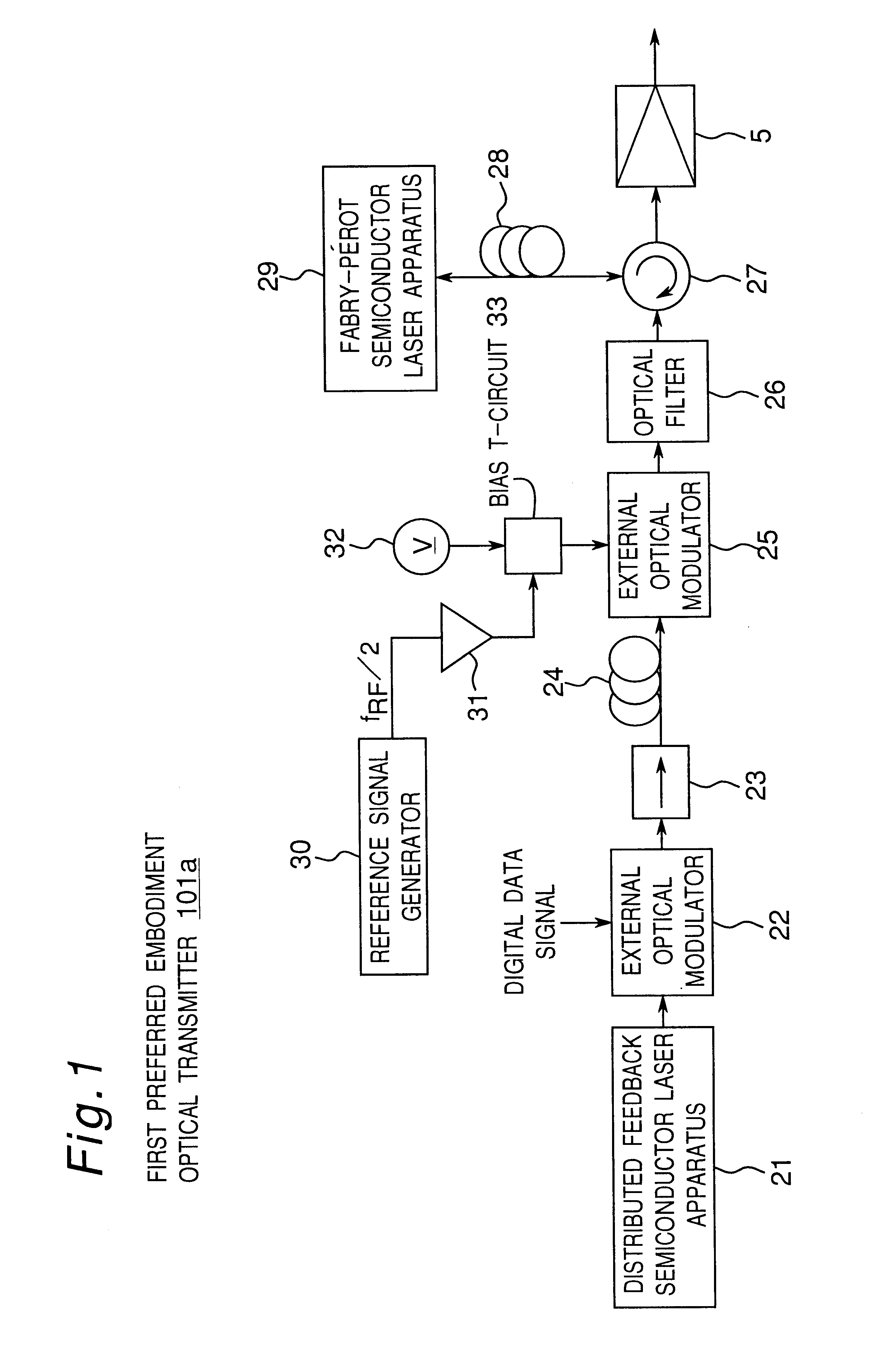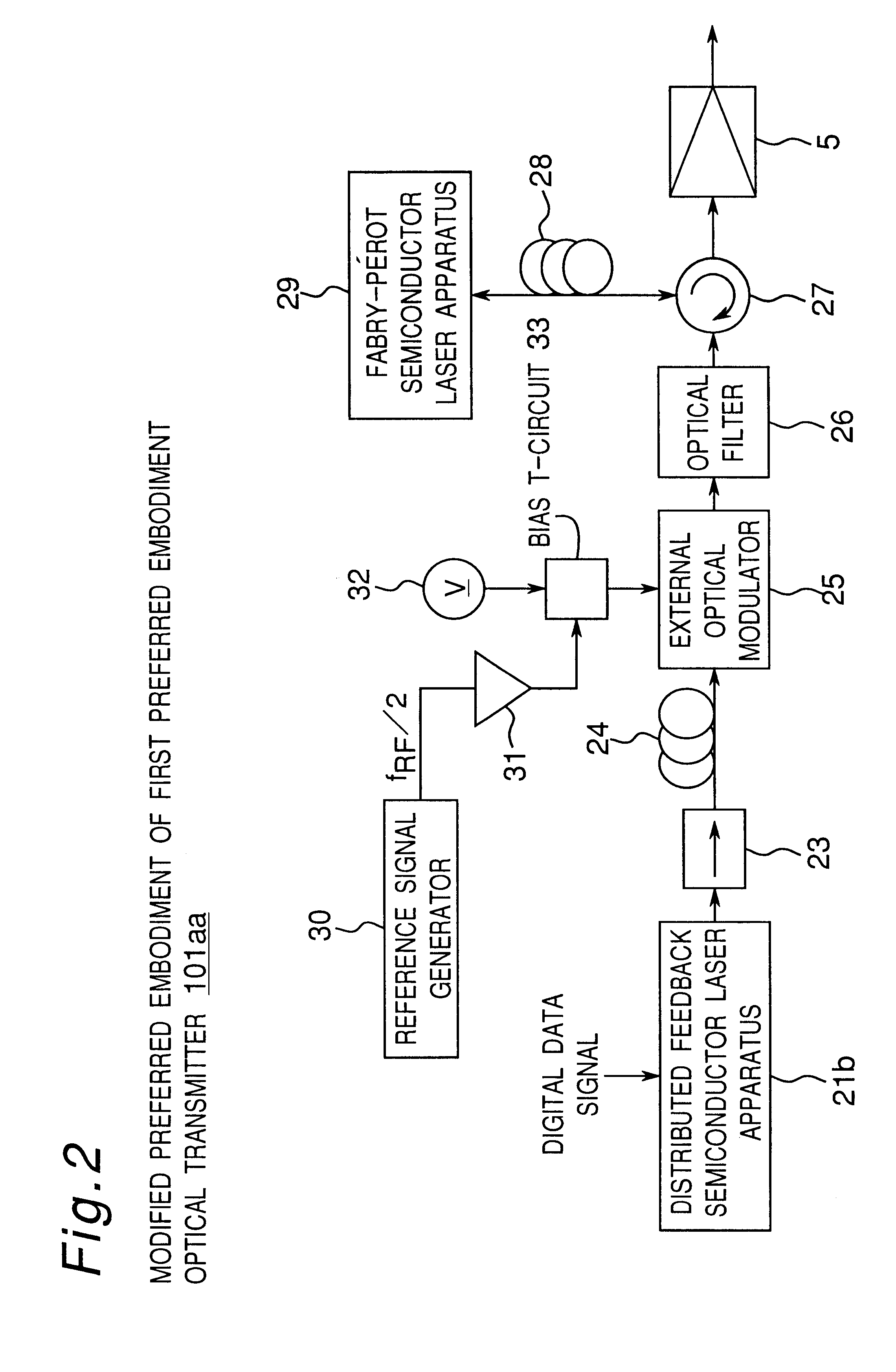Two-optical signal generator for generating two optical signals having adjustable optical frequency difference
a technology of optical frequency difference and optical signal, which is applied in multiplex communication, semiconductor lasers, instruments, etc., can solve the problems of deteriorating phase noise characteristic of millimeter-wave signals, inability to use optical transmitters of the first prior art, and extremely low output ra
- Summary
- Abstract
- Description
- Claims
- Application Information
AI Technical Summary
Problems solved by technology
Method used
Image
Examples
second preferred embodiment
FIG. 3 is a block diagram showing a configuration of an optical transmitter 101b according to a second preferred embodiment of the present invention. The rough configuration of the optical transmitter 101b of FIG. 2 is characterized in constituting a mutual-injection locking type optical oscillation system, in which a single-mode distributed feedback semiconductor laser apparatus 21a is configured as a pass type one, an optical signal generated by distributed feedback semiconductor laser apparatus 21a is optically injected into a Fabry-Perot semiconductor laser apparatus 29, and an optical signal generated by the Fabry-Perot semiconductor laser apparatus 29 is optically injected into the distributed feedback semiconductor laser apparatus 21a.
Referring to FIG. 3, a high-frequency signal having one half of a radio frequency f.sub.RF is applied as a bias current from a reference signal generator 30 via a high-frequency amplifier 31 to the distributed feedback semiconductor laser appara...
third preferred embodiment
FIG. 4 is a block diagram showing a configuration of an optical fiber link system provided with an optical transmitter 101c, according to the third preferred embodiment of the present invention. The rough configuration of this optical transmitter 101c according to the third preferred embodiment is characterized in that, a single-mode optical signal generated by a distributed feedback semiconductor laser apparatus 21 are intensity-modulated by an external optical modulator 25 according to a radio signal having one half of a radio frequency f.sub.RF, the resultant intensity-modulated optical signal including two optical signals (side bands) having an optical frequency difference of the radio frequency f.sub.RF is optically injected into a Fabry-Perot semiconductor laser apparatus 29 via an optical circulator 27 and a polarization-preserving optical fiber cable 28, to injection-lock predetermined specific two optical signals of the above-mentioned optically-injected and intensity-modul...
case 1
(a) Case 1
When the digital data signal has the high level, the Fabry-Perot semiconductor laser apparatus 29 becomes such an operating or enable state that an injection current exceeds a predetermined threshold value. In this state, the predetermined specific two optical signals of the optical signals after intensity-modulation, which are optically injected via the external optical modulator 25 from the distributed feedback semiconductor laser apparatus 21, are injection-locked into the predetermined specific two optical signals of the above-mentioned multi-mode optical signals (in an ON state of injection locking), so that the Fabry-Perot semiconductor laser apparatus 29 generates the above-mentioned predetermined specific two optical signals corresponding to two modes which have simultaneously become the synchronous stable state, and then, outputs the generated predetermined specific two optical signals to an optical receiver 200 via the polarization-preserving optical fiber cable ...
PUM
 Login to View More
Login to View More Abstract
Description
Claims
Application Information
 Login to View More
Login to View More - R&D
- Intellectual Property
- Life Sciences
- Materials
- Tech Scout
- Unparalleled Data Quality
- Higher Quality Content
- 60% Fewer Hallucinations
Browse by: Latest US Patents, China's latest patents, Technical Efficacy Thesaurus, Application Domain, Technology Topic, Popular Technical Reports.
© 2025 PatSnap. All rights reserved.Legal|Privacy policy|Modern Slavery Act Transparency Statement|Sitemap|About US| Contact US: help@patsnap.com



